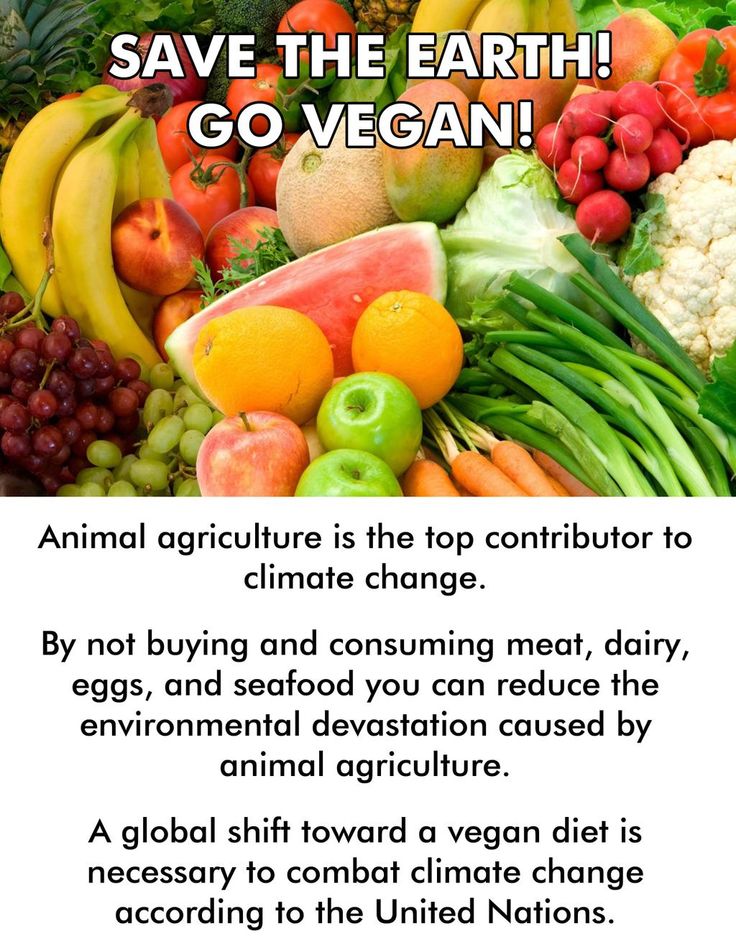Baby feeding chart download
A Newborn Feeding Chart That Works (With Printable!)
What's in this post...
Inside you’ll find all you need to know to put into a newborn feeding chart and then have a printable one for yourself! Whether or not you are interested in sleep training, this will get you started on a great solid routine.
I gave birth to my firstborn in a hospital in Aberdeenshire, Scotland.
With a midwife whom I’d never met.
It all happened so fast and no one thought I was actually near 10 cm because they hadn’t checked dilation since I wasn’t in much pain. Must not be close, they assumed.
But really I’m a redhead and my pain signals are all jacked up so then it was go time before we knew it.
“But I don’t even have the paperwork ready…” she said in a sort of sweet and confused voice.
“IT’LL WAIT!” I yelled.
Fast forward a few days…
Fast forward a few days and I was ready to start tracking my baby’s feeds. I couldn’t remember which side she had fed from or if she was feeding enough and I felt stressed.
I wanted to write it down and keep it in her nursery. So I used a pen and a little notepad and over the next few weeks kept diligent track to make sure things seemed okay.
They were!
Read: The ultimate newborn napping, feeding, and sleeping schedule
Newborn Feeding Chart
Use this simple printable chart to track your feeds to make sure baby is fed, your supply is up, and everyone is well.
Basic Feeding Tips For The Early Weeks
(Psst… you can scroll down and get your free downloadable newborn feeding chart).
Here are some basic rules of thumb when it comes to feeding newborns. Talk to your pediatrician or nursing consultant if you have any issues, but for most babies these principles will help you have a calm, contented baby.
Read: 8 reasons you’ve got a fussy whiny little one
Focus On Filling Baby Up
Newborns are sleepy.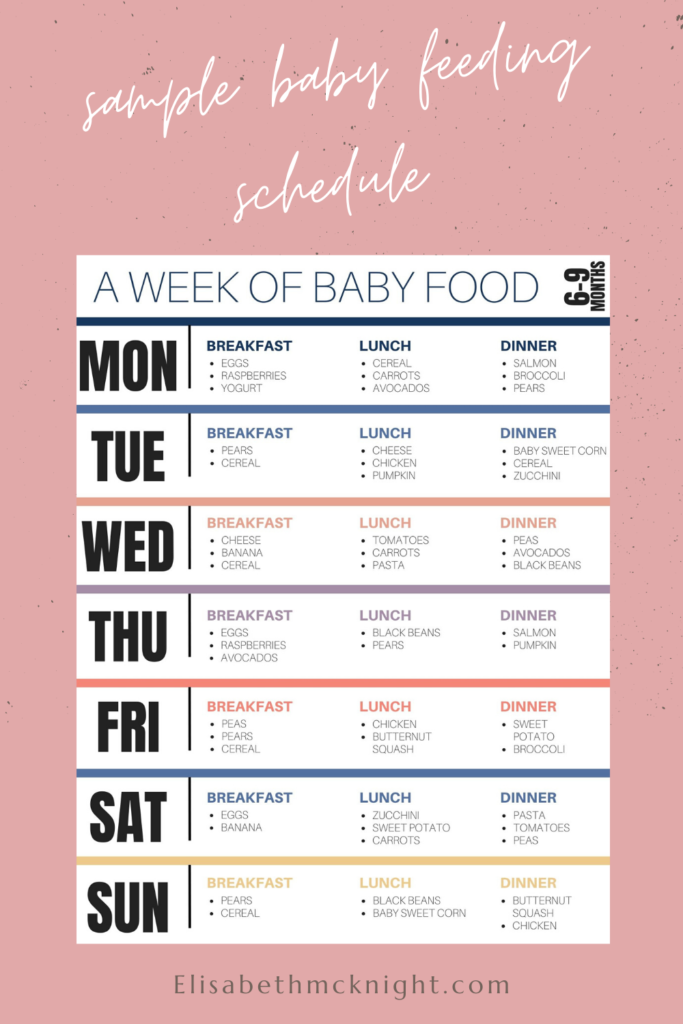 They want to feed a bit then nod off. This is not a good idea for a few reasons, listed below.
They want to feed a bit then nod off. This is not a good idea for a few reasons, listed below.
To keep track of whether or not your baby is taking full feeds, scroll down and get your free newborn feeding chart so you can keep track.
- Babies do not get the breast milk most rich in fat and calories (the hind milk) because if they nurse for a short period they’re only getting the fore milk (less density which means less filling).
- Also, they will not go into a deep sleep (which takes around 20 minutes) and then when they transition through sleep cycles (around 45 minutes or so after they’ve gone to sleep) they’ll wake up out of hunger.
- You will be feeding baby every hour all day long.
Related Reads:
- What To Do When Baby Is Feeding Every Hour (& Not Sleeping!)
- Feeding Baby Through One Year
Newborn Settling Guide
Tried-and-true *hands on* newborn settling strategies that even the most fussy (or wide-awake-sleep-refusing) newborns cannot resist!
Learn More
Feed Unswaddled By Day And Swaddled By Night
We want our babies to know the difference between night and day so they’ll have their wake times in the day and sleepy time at night.
This means that we create certain associations with being awake and other associations with sleep. One of those is the swaddle. You should swaddle from Day One because this will decrease the likelihood your baby “fights the swaddle.”
I had 5 babies and none fought the swaddle because we did it from Day One and there simply wasn’t an option.
Babies who are not swaddled will wake frequently or nap lighter since the startle reflex (moro reflex) will cause their arms to rise up and “startle.”
If they aren’t in a deep sleep cycle this might be enough to wake them.
During the day unswaddle them to feed so you’re communicating wake time. At night, unswaddle the bottom of their swaddle (the swaddles perfect for this shown below) to change their diaper, then reswaddle them and feed swaddled. This means baby will essentially sleep through the feed. Voila!
Read: How to clear up daytime and nighttime confusion in babies
Bring Baby To You, Don’t Lean Towards Baby
Those midwives in Scotland had it going on. Not only did they give you all the logistics while you were in the hospital, they visited you for a few weeks AT HOME during the postpartum period.
Not only did they give you all the logistics while you were in the hospital, they visited you for a few weeks AT HOME during the postpartum period.
You could ask them absolutely anything about anything and they helped make it all work. One thing they gave me in my welcome packet was a DVD on how to get baby to latch properly.
With 5 babies I have had 0 issues with latching on and I’m telling you this works.
Instead of leaning down onto baby, position the breast and the baby’s head so that you push the baby onto your breast.
This means your bringing baby where the milk is, not trying to bring the milk down to baby. And, it means this will make for a better latch.
Related Reads:
- The Difference Between Midwives And Doctors
- How To Get Your Newborn To Sleep Well From Day One
Newborn Feeding Chart
Use this simple printable chart to track your feeds to make sure baby is fed, your supply is up, and everyone is well.
Example Daily Rhythm
Newborns have tiny tummies. You’ll be feeding baby around the clock for weeks at a time. However, by giving full feeds and keeping baby awake during feeds (which can be a feat) you’ll be able to increase the time between feeds providing baby with more restorative naps.
Initially you want to aim for feeding baby every 2.5 to 3 hours. So you may feed at 6 am, 8:30 am, 11:00 am, then 2:00 p.m.
The only reasons baby should feed less than 2.5 hours apart are these:
- Baby is not feeding enough at each feed (not getting calorie rich hind milk or enough ounces of formula)
- They are going through a growth spurt.
- You are cluster feeding in late afternoon early evening on purpose.
Read: The Easy Peasy Newborn Routine That Makes For Happy Babies
A Printable Chart That Works Like A Charm
I’ve created a newborn feeding chart below where you can record what times your baby is feeding and use that to find a good rhythm for you and your baby.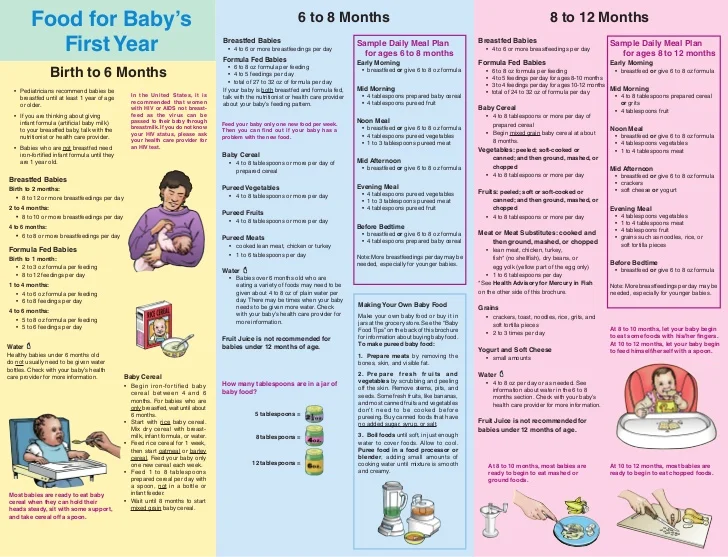
Read: The Dreamfeed: The Why, The How, & When To Stop
Is baby sleeping okay?
Baby bedtime can begin to feel like an actual nightmare.
Moms just want baby to sleep well. You just want to have some peace and quiet after a long day of momming and yet you are spending so much time trying to comfort an exhausted baby and wondering where it all went to pot.
Because moms with babies are busy (and tired) I created a set of nitty gritty baby sleep checklists that get straight to the point.
- Things to look for if your baby is sick.
- Habits to check if your baby won’t sleep at night.
- What to do if your baby won’t go back to sleep at night.
- And so much more!
It’s not usually some major problem that’s causing baby sleep issues, it’s usually something small. Use these checklists and get some clarity today.
Read: Cocooning a Newborn & 7 Reasons Why it Can Be Good For The Family
Newborn Feeding Chart
Use this simple printable chart to track your feeds to make sure baby is fed, your supply is up, and everyone is well.
Sources:
- The importance of schedules and routines
- Routines minimize chaos which promotes resilience and regulation
- Routines indicators of predictable family life contributing to childhood development
Family Routines Reboot
Take our 3 day challenge to create life-giving family, child, and self-care routines.
Learn More
::
Baby Feeding Chart - Etsy.de
Etsy is no longer supporting older versions of your web browser in order to ensure that user data remains secure. Please update to the latest version.
Take full advantage of our site features by enabling JavaScript.
Find something memorable, join a community doing good.
(203 relevant results)
Complementary feeding scheme under the National Program | menu for the first 90 days
Complementary feeding scheme in accordance with the NATIONAL PROGRAM OF OPTIMIZATION OF FEEDING OF CHILDREN IN THE FIRST YEAR OF LIFE IN THE RUSSIAN FEDERATION (hereinafter referred to as the National Program).
Circuit description: show hidden text
About the Closed Weaning Club with Mama Borer : Below is a table of ideal complementary foods, but you should know that information about the set of products and volumes is not enough for a competent introduction of complementary foods. Any mother at the stage of complementary feeding is waiting for a lot of tests. There is a CLOSED club on instagram where I post selective information about modern complementary foods. Details at the link. nine0003
Complementary feeding scheme under the National Program | First month of complementary foods
First week of complementary foods
We introduce zucchini.
- Breakfast: increasing the portion of zucchini puree. We finish breakfast with the usual food (breastfeeding or formula) until full. Oil is added when portion sizes become significant. If volumes cannot be increased, do not add oil .

- Other meals: give the baby the usual food - breastfeeding or formula. nine0028
| Day | New product in diet | Grams (teaspoons) |
| 1 | squash puree | 8 (1) |
| 2 | squash puree | 20 (3) |
| 3 | squash puree | 40 (6) |
| 4 | squash puree + 1/3 tsp vegetable oil | 60 (9) |
| 5 | squash puree + 0.5 tsp vegetable oil | 90 (13) |
| 6 | squash puree + 0.5 tsp vegetable oil | 120 (17) |
| 7 | squash puree + 0.5 tsp vegetable oil | 150 (21) |
Second week of complementary foods
Introducing broccoli. The zucchini has already been introduced.
- Breakfast: we prepare two types of puree. We offer broccoli puree first, zucchini second. Oil is added when portion sizes become significant. nine0007 If volumes cannot be increased, do not add oil .
- Other meals: give the baby the usual food breastfeeding or formula.
| Day | New product | Grams (teaspoons) | Previously introduced product | Grams (teaspoons) |
| 8 | broccoli puree | 8 (1) | zucchini puree +0.5 tsp vegetable oil | 142 (20) |
| 9 | broccoli puree | 20 (3) | zucchini puree +0.5 tsp vegetable oil | 130 (17) |
| 10 | broccoli puree | 40 (6) | zucchini puree +0.5 tsp vegetable oil | 110 (15) |
| 11 | broccoli puree | 60 (9) | zucchini puree + 0. 5 tsp vegetable oil 5 tsp vegetable oil | nine0049 90 (12) |
| 12 | Broccoli puree + 1/3 tsp vegetable oil | 90 (13) | zucchini puree + 1/3 tsp vegetable oil | 60 (8) |
| 13 | broccoli puree + 0.5 tsp vegetable oil | 120 (17) | zucchini puree | 30 (4) |
| 14 | broccoli puree + 0.5 tsp vegetable oil | 150 (21) | nine0211 |
Third week of complementary foods
Introducing cauliflower. Zucchini and broccoli have already been introduced.
- Breakfast: we prepare two types of puree. We offer cauliflower puree first, broccoli / zucchini second. Oil is added when portion sizes become significant. If volumes cannot be increased, do not add oil .
- Other meals: give the baby the usual food - breastfeeding or formula.
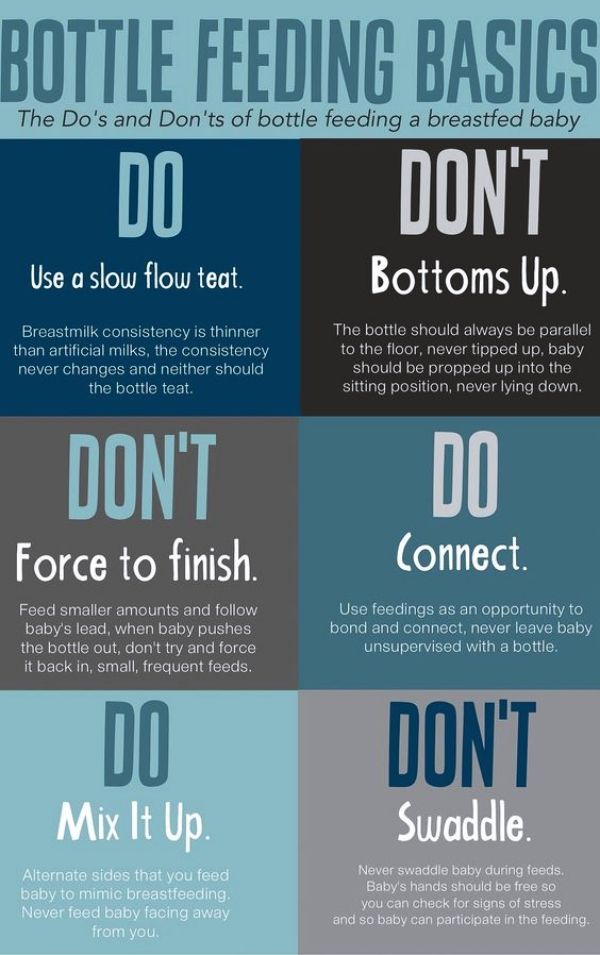 nine0028
nine0028
| Day | New product | Grams (teaspoons) | Previously introduced product | Grams (teaspoons) |
| 15 | cauliflower puree | 8 (1) | broccoli puree +0.5 tsp vegetable oil | 142 (20) |
| 16 | cauliflower puree | 20 (3) | zucchini puree +0.5 tsp vegetable oil | 130 (17) |
| 17 | cauliflower puree | 40 (6) | broccoli puree + 0.5 tsp vegetable oil | 110 (15) |
| 18 | cauliflower puree | 60 (9) | zucchini puree +0.5 tsp vegetable oil | 90 (12) |
| 19 | Cauliflower puree + 1/3 tsp vegetable oil | 90 (13) | broccoli puree + | 60 (8) |
| 20 | cauliflower puree + 0.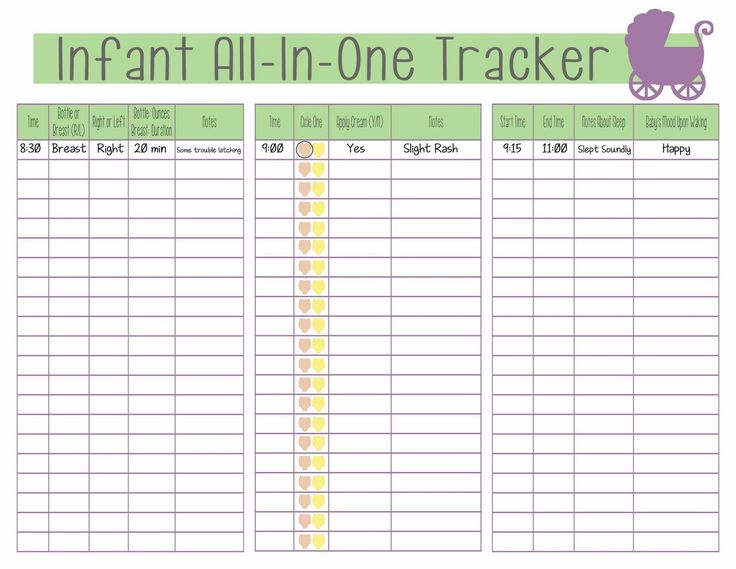 5 tsp vegetable oil 5 tsp vegetable oil | 120 (17) | zucchini puree | 30 (4) |
| 21 | cauliflower puree + 0.5 tsp vegetable oil | 150 (21) |
Fourth week of complementary foods
We introduce buckwheat. We add a second meal of complementary foods - lunch. Zucchini, broccoli, cauliflower have already been introduced. nine0003
- Breakfast: Cooking buckwheat. We finish breakfast with the usual food (breastfeeding or formula) until full. If volumes cannot be increased, do not add oil by the end of the week .
- Lunch: for lunch we serve a portion of mashed potatoes (150 gr) from familiar vegetables.
- Other meals: give the baby the usual food breastfeeding or formula.
| Day | New product in diet | Grams (teaspoons) |
| 22 | buckwheat | 8 (1) |
| 23 | buckwheat | 20 (3) |
| 24 | buckwheat | 40 (6) |
| 25 | buckwheat + 1/3 tsp butter | 60 (9) |
| 26 | buckwheat + 0. 5 tsp butter 5 tsp butter | 90 (13) |
| 27 | buckwheat + 0.5 tsp butter | 120 (17) |
| 28 | buckwheat + 0.5 tsp butter | 150 (21) |
Complementary feeding scheme under the National Program | Second month of complementary foods
Fifth week of complementary foods
We introduce rice porridge. Zucchini, broccoli, cauliflower, buckwheat have already been introduced.
- Breakfast: we cook 2 types of porridge (rice and buckwheat). First we offer rice, the second - buckwheat.
- Lunch: We eat the previously introduced vegetables for lunch in the amount required by the baby (average portion 150 gr). nine0028
- Other meals: give the baby the usual food breastfeeding or formula.
| Day | New product | Grams (teaspoons) | Previously introduced product | Grams (teaspoons) |
| 29 | rice | 8 (1) | buckwheat + 1 tsp butter | 142 (20) |
| 30 | rice | 20 (3) | buckwheat + 1 tsp butter | 130 (17) |
| 31 | rice | 40 (6) | buckwheat + 1 tsp butter | 110 (15) |
| 32 | rice + 0. 3 tsp butter 3 tsp butter | 60 (9) | buckwheat + 0.5 tsp butter | 90 (12) |
| 33 | rice + 0.5 tsp butter | 90 (13) | buckwheat + 0.3 tsp butter | 60 (8) |
| 34 | rice + 1 tsp butter | 120 (17) | buckwheat | 30 (4) |
| 35 | rice + 1 tsp butter | 150 (21) |
Sixth week of complementary foods
We drive a rabbit. On the second month of successful introduction of complementary foods, the gastrointestinal tract is ready for the introduction of meat. Zucchini, broccoli, cauliflower, buckwheat, rice have already been introduced.
- Breakfast: Cooking buckwheat/rice (portion 150 gr), adding meat to the porridge!
- Lunch: for lunch we serve a portion of mashed potatoes (150 gr) from familiar vegetables.
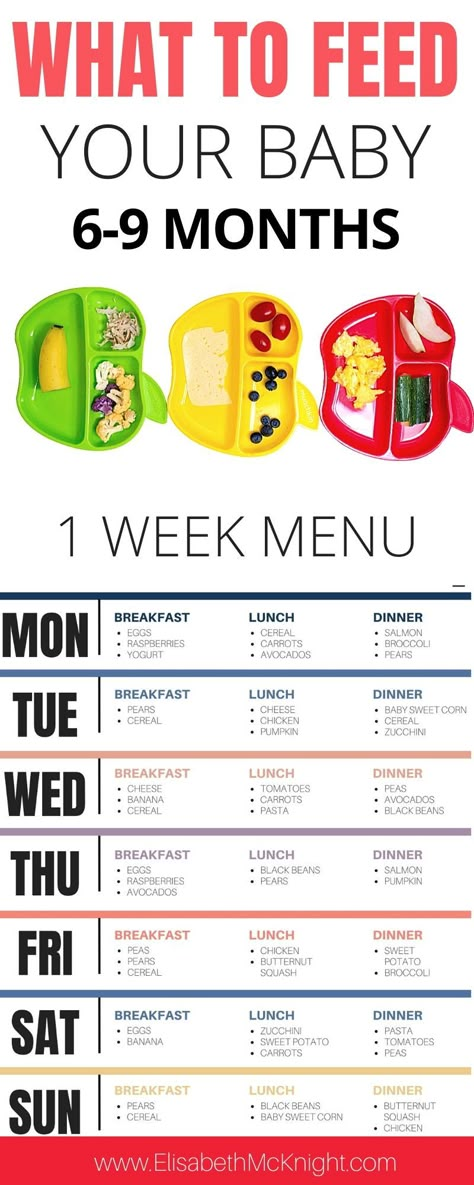
- Other meals: give the baby the usual food breastfeeding or formula.
| Day | New product | Grams (teaspoons) | Previously introduced product | Grams (teaspoons) |
| 36 | nine0037 rabbit meat/commercial rabbit puree3g/5g | buckwheat + 1 tsp butter | 150 (21) | |
| 37 | rabbit meat/commercial rabbit puree | 6g/10g | rice + 1 tsp butter | 150 (21) |
| 38 | rabbit meat/commercial rabbit puree | 10gr/20gr | buckwheat + 1 tsp butter | 150 (21) |
| 39 | rabbit meat/commercial rabbit puree | 15g/30g | rice + 1 tsp butter | 150 (21) |
| 40 | rabbit meat/commercial rabbit puree | 15g/30g | buckwheat + 1 tsp butter | 150 (21) |
| 41 | rabbit meat/commercial rabbit puree | 15g/30g | rice + 1 tsp butter | 150 (21) | nine0043
| 42 | rabbit meat/commercial rabbit puree | 15g/30g | buckwheat + 1 tsp butter | 150 (21) |
Seventh week of complementary foods
Introducing corn porridge. Six products have already been introduced: zucchini, broccoli, cauliflower, buckwheat, rice, rabbit meat.
Six products have already been introduced: zucchini, broccoli, cauliflower, buckwheat, rice, rabbit meat.
- For breakfast: we add corn porridge to the usual porridges. For breakfast we prepare 2 types of porridge (corn and buckwheat/rice). We offer the first corn, the second - buckwheat or rice. The volumes are listed below. nine0028
- For lunch: we eat alternating previously introduced vegetable purees of 150 gr.
- Meat a little bit daily for hemoglobin: In addition to cereals and vegetables, we give the child rabbit meat (15 gr) or industrial rabbit meat puree (30 gr). You can give it in the morning with porridge or for lunch with vegetables, as you prefer.
| Day | New product | Grams (teaspoons) | Previously introduced product | Grams (teaspoons) |
| 43 | corn porridge | 8 (1) | buckwheat + 1 tsp butter | 142 (20) |
| 44 | corn porridge | 20 (3) | rice + 1 tsp butter | 130 (17) |
| 45 | corn porridge | 40 (6) | buckwheat + 1 tsp butter | 110 (15) |
| 46 | corn porridge | 60 (9) | rice + 0. 5 tsp butter 5 tsp butter | 90 (12) |
| 47 | corn porridge + 0.5 tsp butter | 90 (13) | buckwheat + 0.3 tsp butter | 60 (8) |
| 48 | corn porridge + 1 tsp butter | 120 (17) | rice | 30 (4) |
| 49 | corn porridge + 1 tsp butter | 150 (21) |
Eighth week of complementary foods
We introduce pumpkin puree. 7 products have already been introduced: zucchini, broccoli, cauliflower, buckwheat, rice, corn porridge, rabbit meat.
- For breakfast: alternating, we eat previously introduced cereals of 150 gr.
- For lunch: add pumpkin to the usual vegetables. The volumes are listed below.
- Meat a little bit daily for hemoglobin: In addition to cereals and vegetables, we give the child rabbit meat (15 gr) or industrial rabbit meat puree (30 gr).
 You can give it in the morning with porridge or for lunch with vegetables, as you prefer. nine0028
You can give it in the morning with porridge or for lunch with vegetables, as you prefer. nine0028
| Day | New product | Grams (teaspoons) | Previously introduced product | Grams (teaspoons) |
| 50 | pumpkin puree | 8 (1) | cauliflower puree +1 tsp vegetable oil | 142 (20) |
| 51 | pumpkin puree | 20 (3) | broccoli puree + 1 tsp vegetable oil | 130 (17) |
| 52 | pumpkin puree | 40 (6) | zucchini puree +1 tsp vegetable oil | 110 (15) |
| 53 | pumpkin puree | 60 (9) | cauliflower puree + 1 tsp vegetable oil | 90 (12) |
| 54 | pumpkin puree | 90 (13) | broccoli puree + 1 tsp vegetable oil | 60 (8) | nine0043
| 55 | pumpkin puree + 1 tsp. vegetable oil vegetable oil | 120 (17) | zucchini puree | 30 (4) |
| 56 | pumpkin puree + 1 tsp. vegetable oil | 150 (21) |
Complementary feeding scheme under the National Program | Third month of complementary foods
Ninth week of complementary foods
Introduce applesauce. At the input stage, we offer an apple as a snack between breakfast and lunch or for an afternoon snack. 8 products have already been introduced: zucchini, broccoli, cauliflower, pumpkin, buckwheat, rice, corn porridge, rabbit meat. nine0003
- For breakfast: alternating, we eat previously introduced cereals of 150 gr.
- For lunch: alternating, we prepare vegetable purees from familiar vegetables, 150 gr each.
- Meat for hemoglobin : In the tenth week of feeding, the child should be 7 months old, which means we increase the daily norm of meat: rabbit meat (30 g) or industrial rabbit meat puree (50 g).
 It can be served in the morning with porridge or for lunch with vegetables, as you prefer.
It can be served in the morning with porridge or for lunch with vegetables, as you prefer.
| Day | New product | Grams (teaspoons) |
| 57 | applesauce | 8 (1) |
| 58 | applesauce | 15 (2) |
| 59 | applesauce | 20 (3) |
| 60 | applesauce | 30 (4) |
| 61 | applesauce | 40 (6) |
| 62 | applesauce | 50 (7) |
| 63 | applesauce | 70 (10) |
The tenth week of complementary foods
Introducing oatmeal. 9 products have already been introduced: zucchini, broccoli, cauliflower, pumpkin, buckwheat, corn porridge, rice, rabbit meat. applesauce.
applesauce.
- For breakfast: add oatmeal to the usual porridge. For breakfast, we cook 2 types of porridge (oatmeal and corn / buckwheat / rice). First we offer oatmeal, the second - corn / buckwheat or rice. Oatmeal is taken in the form of flakes, its other name is oatmeal. Do not confuse with cereal oatmeal. nine0028
- For lunch: alternating vegetable puree from familiar vegetables portion 150 gr.
- Meat for hemoglobin : Together with vegetables, daily give the child rabbit meat (30 g) or industrial rabbit puree (50 g).
- Snack: apple puree 70 gr.
| Day | New product | Grams (teaspoons) | Previously introduced product | Grams (teaspoons) |
| 64 | oatmeal | 8 (1) | buckwheat + 1 tsp butter | 142 (20) |
| 65 | oatmeal | 20 (3) | rice + 1 tsp butter | 130 (17) |
| 66 | oatmeal | 40 (6) | corn porridge + 1 tsp butter | 110 (15) |
| 67 | oatmeal + 0.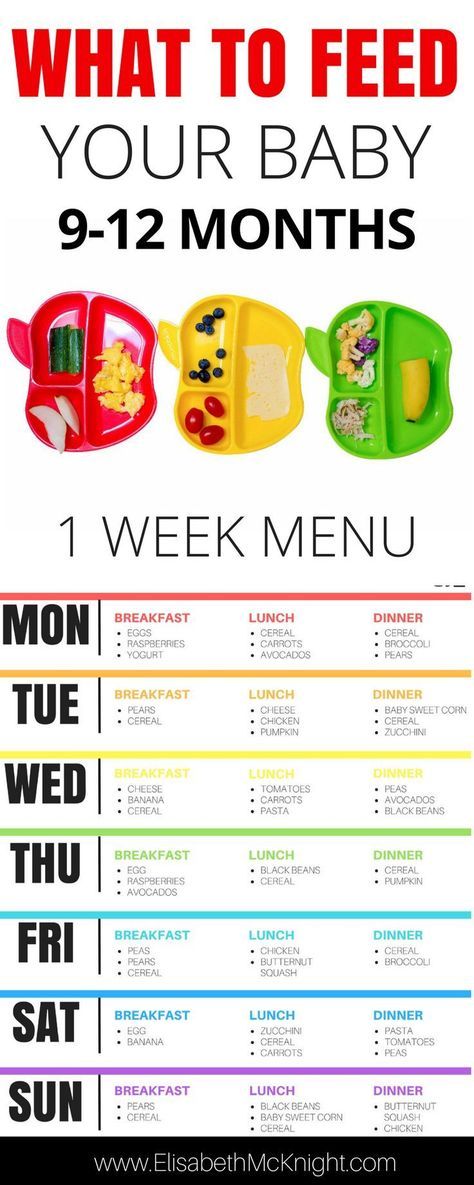 3 tsp butter 3 tsp butter | 60 (9) | buckwheat + 0.5 tsp butter | 90 (12) |
| 68 | oatmeal + 0.5 tsp butter | 90 (13) | rice + 0.3 tsp butter | 60 (8) |
| 69 | oatmeal +1 tsp butter | 120 (17) | corn porridge | 30 (4) |
| 70 | oatmeal +1 tsp butter | nine0049 150 (21)
Eleventh week of complementary foods
Introduce turkey yolk and meat. 10 products have already been introduced: zucchini, broccoli, cauliflower, pumpkin, buckwheat, corn porridge, rice, oatmeal, rabbit meat. applesauce.
- For breakfast: one of the previously introduced cereals (buckwheat, corn porridge, rice, oatmeal) 150 gr + in the first half of the week we increase the amount of yolk (for babies of 7 months, maximum per day - 1/4 yolk, from 8 months up to a year 1/2 yolk)
- For lunch: alternating vegetable puree from familiar vegetables portion 150 gr.
 Together with vegetables, we give the child rabbit meat (30 g) or industrial rabbit meat puree (50 g) daily. In the second half of the week, we gradually replace rabbit meat with turkey.
Together with vegetables, we give the child rabbit meat (30 g) or industrial rabbit meat puree (50 g) daily. In the second half of the week, we gradually replace rabbit meat with turkey. - Snack: apple puree 70 gr.
| Day | New product | Grams (teaspoons) | Previously introduced product | Grams (teaspoons) |
| 71 | yolk 1/8 yolk | |||
| 72 | yolk 1/4 yolk | |||
| 73 | yolk 1/4 yolk | |||
| 74 | turkey meat/commercial turkey puree | 3g/5g | rabbit meat/commercial rabbit puree | 12gr/25gr. |
| 75 | turkey meat/commercial turkey puree | 10g/15g | rabbit meat/commercial rabbit puree | 20gr/35gr.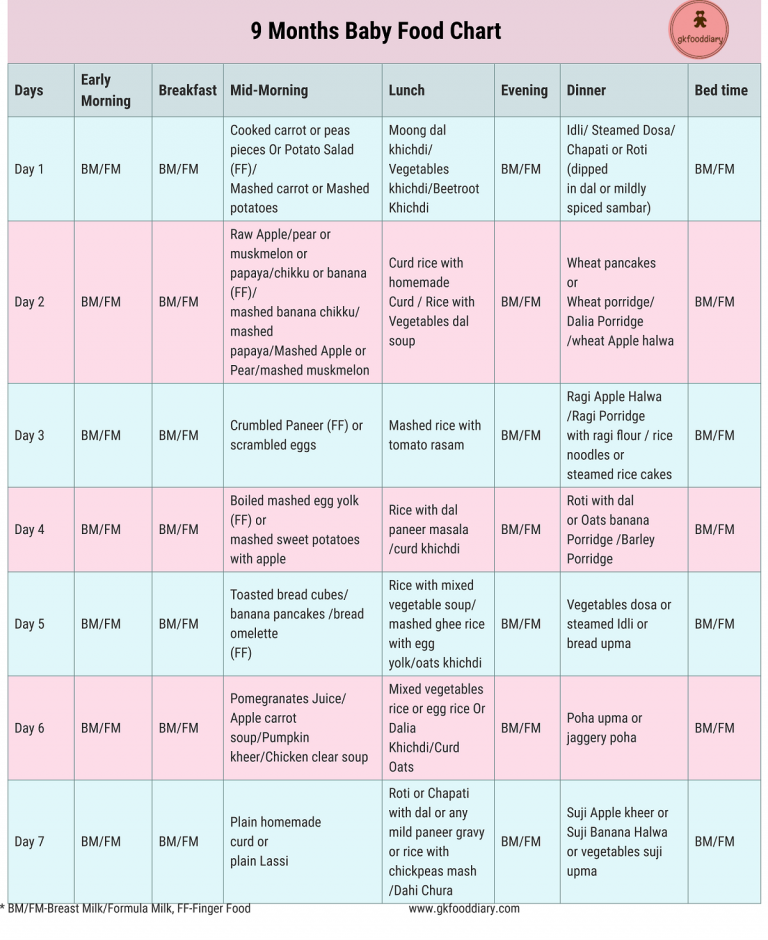 |
| 76 | turkey meat/commercial turkey puree | 15g/30g | rabbit meat/commercial rabbit puree | 15gr/20gr. |
| 77 | turkey meat/commercial turkey puree | 30gr./50gr. | rabbit meat/commercial rabbit puree |
Twelfth week of complementary foods
We introduce pear puree. 12 products have already been introduced: zucchini, broccoli, cauliflower, pumpkin, buckwheat, corn porridge, rice, oatmeal, rabbit and turkey meat, applesauce, egg yolk.
- For breakfast: one of the previously introduced cereals (buckwheat, corn porridge, rice, oatmeal) + yolk (7 months - 1/4, 8 months - 1/2).
- For lunch: alternating vegetable puree from familiar vegetables portion 150 gr. Together with vegetables, we give the child turkey or rabbit meat every day (30 g of meat or 50 g of industrial puree).
 nine0028
nine0028 - Afternoon snack: during the week we gradually replace the apple with a pear.
| Day | New product | Grams (teaspoons) | Previously introduced product | Grams (teaspoons) |
| 78 | pear puree | 8 (1) | applesauce | 62 (9) |
| 79 | pear puree | 15 (2) | applesauce | 55 (8) |
| 80 | pear puree | 20 (3) | applesauce | 50 (7) |
| 81 | pear puree | 30 (4) | applesauce | 40 (6) |
| 82 | pear puree | 40 (6) | applesauce | 30 (4) |
| 83 | pear puree | 50 (7) | applesauce | 20 (3) |
| 84 | pear puree | 70 (10) |
Weaning week 13
We introduce chicken. Already introduced: zucchini, broccoli, cauliflower, pumpkin, buckwheat, corn porridge, rice, oatmeal, rabbit and turkey meat, apple, pear, egg yolk.
Already introduced: zucchini, broccoli, cauliflower, pumpkin, buckwheat, corn porridge, rice, oatmeal, rabbit and turkey meat, apple, pear, egg yolk.
- For breakfast: one of the previously introduced cereals (buckwheat, corn porridge, rice, oatmeal). We serve the yolk to the porridge. 7 months - 1/4 yolk, 8 months. - 1/2. nine0028
- For lunch: preparing vegetable puree from familiar vegetables portion 150 gr. Together with vegetables, we give the child a rabbit or turkey every day. During the week, we gradually introduce the child to chicken meat.
- Snack: daily give 70 g of fruit puree alternating apple and pear.
| Day | New product | Grams (teaspoons) | Previously introduced product | Grams (teaspoons) | nine0043
| 85 | chicken meat/ industrial chicken puree | 3g/5g | turkey meat/ industrial turkey puree | 27gr. /45gr. /45gr. |
| 86 | chicken meat/ industrial chicken puree | 10g/15g | rabbit meat/ industrial rabbit puree | 20g/35g |
| 87 | chicken meat/ industrial chicken puree | 20g/30g | turkey meat/ industrial turkey puree | 10g/20g |
| 88 | chicken meat/ industrial chicken puree | 30gr./50gr. | ||
| 89 | chicken meat/ industrial chicken puree | 30gr./50gr. | ||
| 90 | chicken meat/ industrial chicken puree | 30gr./50gr. |
Fourteenth week of complementary foods
We introduce carrots and beets. 14 products have already been introduced: zucchini, broccoli, cauliflower, pumpkin, buckwheat, corn porridge, rice, oatmeal, rabbit meat, turkey and chicken, apple, pear, egg yolk. nine0003
nine0003
- For breakfast: one of the previously introduced cereals (buckwheat, corn porridge, rice, oatmeal). We serve the yolk to the porridge. At 8 months, you can already have half.
- For lunch: in the first part of the week we gradually add carrots to the previously familiar vegetables, in the second part of the week - beets. Carrots and beets are concentrated vegetables, so mix them with zucchini or cabbage puree. Together with vegetables, we give the child a rabbit, turkey or chicken every day. For a child of 7 months: 30 g of meat or 50 g of industrial puree. For a child of 8 months: 35 gr. meat or 70 gr. industrial puree. nine0028
- Snack: daily give 70 g of fruit puree alternating apple and pear. For babies 8 months 80 gr puree.
| Day | New product | Grams (teaspoons) | Previously introduced product | Grams (teaspoons) |
| 91 | carrot puree | 8 (1) | zucchini puree +1 tsp vegetable oil | 142 (20) | nine0043
| 92 | carrot puree | 20 (3) | broccoli puree +1 tsp vegetable oil | 130 (17) |
| 93 | carrot puree | 40 (6) | cauliflower puree marrow +1 tsp vegetable oil | 110 (15) |
| 94 | carrot puree | 60 (9) | zucchini puree +1 tsp vegetable oil | 90 (12) | nine0043
| 95 | beet puree | 8 (1) | broccoli puree +1 tsp vegetable oil | 142 (20) |
| 96 | beet puree | 20 (3) | cauliflower puree marrow +1 tsp vegetable oil | 130 (17) |
| 97 | beet puree | 40 (6) | zucchini puree +1 tsp vegetable oil | 110 (15) |
The form for downloading and printing the complementary feeding scheme is here.
Complementary feeding scheme under the National Program | Complementary feeding problems
- Difficulties with stool : constipation during the introduction of complementary foods can occur even against the background of zucchini. This is due to the restructuring of the gastrointestinal tract, and not the fact that the zucchini is “heavy”. "Jump" to another product is not worth it, as this will further complicate the task for the gastrointestinal tract. You should stop increasing the volume of the new product, slightly reduce the already built-up product and wait for the stool to stabilize. Offer water to drink. When the problems pass, introduce a new product not in 7 days, but in 10-14. nine0028
- Serving sizes c may be significantly smaller than the reference. It should also be borne in mind that the diagram shows volumes for an infant with an average energy requirement. Depending on the activity and complexion of the baby, they can vary + -30%.
 With a greater deviation from the norm, it is recommended to consult a pediatrician.
With a greater deviation from the norm, it is recommended to consult a pediatrician. - Underweight. When underweight, porridge should be introduced first. Secondly, vegetables or meat. nine0033
- Complementary foods are necessary for the formation of proper eating behavior
WHO Complementary Feeding Tables and Charts
This article is a generalized analysis of two approaches to the introduction of complementary foods and feeding of infants up to a year: the Russian Research Institute of Nutrition of the Russian Academy of Medical Sciences and the World Health Organization (WHO). Also, the analysis took into account the opinions of some respected pediatricians of our country (Y. Yakovlev and others). nine0008
This page has a link to a PDF file with a table (calendar) for introducing complementary foods for the first 6 weeks
Two main principles for introducing complementary foods
The main thing to keep in mind before rolling up your sleeves is introduced to prepare for the common table (that is, the baby must learn to eat on his own)
This is the most important of all the variety of reasons to start introducing complementary foods. Of course, there are exceptions in terms of health, but we are talking about a standard situation. nine0003
Of course, there are exceptions in terms of health, but we are talking about a standard situation. nine0003
Since the first stage of introducing complementary foods is precisely preparation, no breastfeeding during this period (according to WHO up to 1 year) should be removed or replaced with complementary foods.
And the second conclusion must always be put at the forefront of eating behavior. No cartoons, running after a child with a spoon, and even more so violence and blackmail.
Yes, at the first stage you will stuff the spoon, it is not difficult. It will be much more difficult to retrain a 1.5-year-old child to eat on his own or, even worse, form a food interest from scratch if the child does not start eating properly or refuses to eat (this is an extreme case). nine0003
I will say with the doctor's words "A hungry child eats, but a tired child sleeps." This reflects the essence of a well-formed eating behavior: I want to eat - I eat. Of course, this is more typical for an older child, when all stages of complementary feeding have been completed. And the right tactics at the very beginning is the key to the successful implementation of this rule in the future.
And the right tactics at the very beginning is the key to the successful implementation of this rule in the future.
So, we remove all the garbage from the head (including those imposed by pediatricians working according to Soviet manuals) and move on to the tactics of the first complementary foods. nine0003
When to start introducing complementary foods
When to introduce complementary foods? I have already written about this in part in a general article. Here I will be guided by the WHO methodology stated above. It's written in black and white.
“The start of introducing complementary foods should be considered the age of 6 months, and not the beginning, but the end of 6 months or 26 weeks
It is important to know the main indicators of readiness for complementary foods other than age.
Not the beginning of 6 months, but the child reaching the age of 6 completed months. Therefore, if your pediatrician once again prescribes complementary foods for you from 4 months without serious medical reasons, you can smile and keep a printout from this manual in your pocket. Non-critical weight loss does not apply here. This is a very complex topic, it should be discussed separately. At least 125 grams per week, babies should gain on GW, and not 700-800-800 ... per month as in their Soviet-era tables. nine0003
Non-critical weight loss does not apply here. This is a very complex topic, it should be discussed separately. At least 125 grams per week, babies should gain on GW, and not 700-800-800 ... per month as in their Soviet-era tables. nine0003
Dear mothers, breathe out. You have a whole month from 6 to 7 to start introducing complementary foods. It is absolutely not necessary to do this at the 21-22nd week (page 220 of the WHO recommendations, chapter 8).
It is better not to delay 8 months later, as this will already concern the development of certain chewing skills, the development of taste perception, and not just the inability of milk to provide all the needs of a rapidly growing organism in micro and macro elements.
In addition to 7 months, in general, the development of the nervous system allows the child to master the following skills:
- biting and chewing
- cleansing the spoon with the lips
- lateral movements of the tongue
- moving food towards the teeth
All this indicates the ability of a child by the age of 7 months to taste food only in pieces, and not in pure form.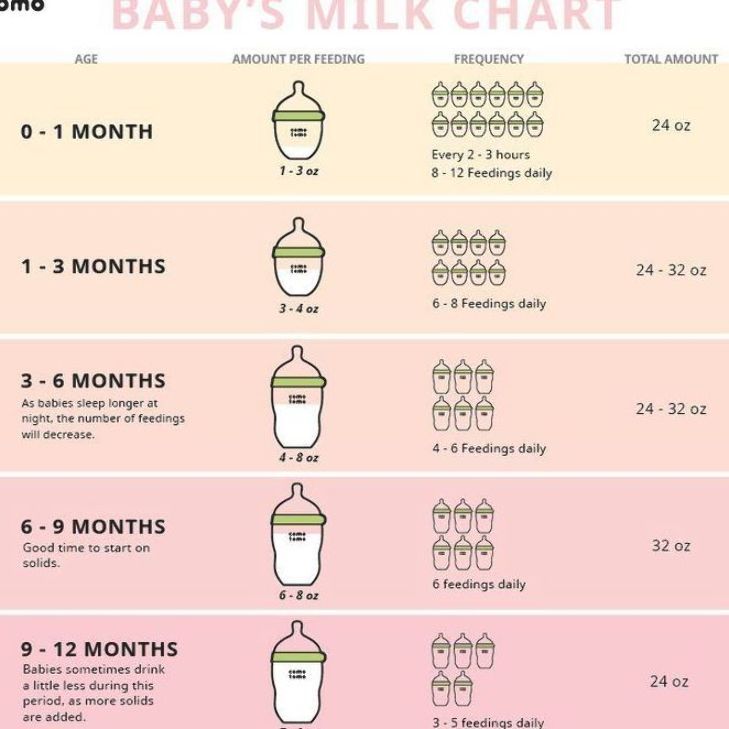 You need to start with microdoses.
You need to start with microdoses.
For some reason, complementary foods consultants, at least those who met me, do not focus on this for a period of weeks. It seems to me that this is very in vain, since such a backlash will allow mom to calmly determine the degree of readiness of the baby to introduce complementary foods. And this is also very important for the formation of proper eating behavior. nine0003
Feeding food too early can have a negative effect on the formation of the correct nutritional interest . The unpreparedness of the child, in turn, can lead to nervousness of the mother, as the child will refuse complementary foods, or the gastrointestinal tract will fail, then persuasion, dancing with tambourines, and so on. All this alone will not solve the problem. This is already a consequence.
It is important to determine how ready your child is for complementary foods . Not ready - move the start to 6.5 - 6.7 months. It's not critical. nine0003
nine0003
2 clear signs of readiness for the introduction of complementary foods
- Readiness of the gastrointestinal tract
- Readiness of the nervous system (food interest)
Serving size of the first solid food
Your pediatrician will very likely tell you to increase the serving size to 200 grams. At the preparatory stage, this is completely optional! You remember, not a single breastfeeding (mixture) is replaced. This statement also takes its roots from pediatric tables, where a child at 6 months should consume 1 liter of food per day. We divide this into 5 doses - we get 200 milliliters
But we are talking about breast milk (formula). You breastfeed your baby on demand (if formula, then by grams, but also without changing the schedule before complementary foods). Accordingly, this recommendation has no weight until you start replacing one feeding with complementary foods, and this is definitely not the first stage. Unless, of course, you decide to quit breastfeeding early. I am talking about those mothers who plan to breastfeed for at least a year (not even up to 2, as WHO consultants now recommend, although the manual is not so strict and according to the mutual desire of mother and baby). nine0003
Unless, of course, you decide to quit breastfeeding early. I am talking about those mothers who plan to breastfeed for at least a year (not even up to 2, as WHO consultants now recommend, although the manual is not so strict and according to the mutual desire of mother and baby). nine0003
Myth - Start with canned puree
This myth is actively inculcated by the same pediatricians (not all, we have met), scaring mothers with pesticides in purchased zucchini.
WHO guidelines clearly state :
“Ideally, infants should eat the same diet as the whole family” not french fries and burgers. Therefore, if the mother prepares a common table, all seasonings are introduced after the portion of the baby is postponed. Next, a portion of the baby is brought to the desired consistency. nine0003From WHO recommendations:
“Carers should choose appropriate foods and prepare them in such a way as to maximize their nutritional value”steam" is preferable to boiling.
Therefore, if you have the time and desire, and even more so if you have access to subsistence farming, a blender and a double boiler are in your hands.
Most importantly, read the basic cooking tips if you cook yourself. And if you decide to stop at canned food, analyze the product lines in your stores, choose the best quality without starch, flour and other surprisingly unnecessary components, and buy according to the complementary food scheme. nine0003
However, the same WHO recommendations say that if you choose industrial cans, you still need to give food from the common table, "to accustom the child to a greater variety of taste sensations and structures." Again, food in pieces should be introduced from 7 months, and in one-component vegetable puree, food will be in the form of puree without pieces. Therefore, you still have to cook at least vegetables for microdoses.
Basic rules for the first phase of introducing complementary foods for the first six weeks
Complementary foods of a new product are introduced in the morning , usually for breakfast
Gradually! Serving size increases from 1/2 tsp.
up to 150 - 200 gr. maximum within 7 days. Some modern pediatricians recommend extending this period at the first stage to 10-14 days. There are no strict requirements, so watch the child's well-being after introducing new food, his mood and appetite in general.
If you need more than 7 days to adapt to a new food, simply extend the proposed complementary feeding schedule over a longer period, adjusting the amount of food introduced. nine0003
At the stage of introduction of complementary foods, the maximum is how much the child wants to eat (even 2-3 tablespoons), but not more than 150 - 200 grams
Remember! At the input stage, the maximum is how much the child wants to eat (even 2-3 tablespoons), but not more than 150 - 200 gr.
And here it should be noted that a child should consume 200 grams of porridge or vegetables at 9-12 months. according to the methodological recommendations of the Russian Academy of Medical Sciences (namely, the "Scientific Center for Children's Health of the Russian Academy of Medical Sciences" of the State Institution "Research Institute of Nutrition of the Russian Academy of Medical Sciences, 2010)
At 6 months.
Serving size - 150 gr. nine0003
At 7 months — 170 gr.
Therefore, your maximum is the one from which month you introduce complementary foods, and not 200 grams
New food is introduced only after complete assimilation of the old
In case some product was rejected, we remove it completely and introduce a new also according to the scheme. We return to the rejected product no earlier than 14 days. It may take several approaches to try. This is absolutely normal. The child grows, there are more enzymes, tastes change. It is also possible to completely refuse to eat, for example, broccoli. Don't worry, there are many more flavors. Remove the broccoli completely before moving to the common table. Then you will use the method of interest and curiosity to attract the attention of an already grown up baby, with rapture eating the same broccoli from your plate and smacking your lips. It will be much later. And now it doesn't matter. nine0003
Digested products are gradually shifted to lunch, then to dinner.

The time of meals in the scheme is taken conditionally ! You can shift the total time by 1-2 hours to fit your sleep and wake schedule. It is desirable that the meal regimen be maintained at the time you have chosen. If breakfast is at 10:00, then it is always at 10:00 +/-10 min. From the very beginning, the regimen will help you form an understanding of the time of meals. And in the future, it will be easier for the child to control his appetite. That is, the appetite will come around for lunch, dinner, and not "when I want." nine0003
Remember! Biting during the day is a bad habit and your path to the term "little one".
Do not chase volumes at the first stage of introducing complementary foods! Literally from the WHO manual:
“The goal at the initial stage is to teach the child to eat from a spoon. Learn eating habits and enjoy new tastes""After a FEW WEEKS, the infant should take a small (not 200 grams!) amount of foods selected from a wide variety of foods, 1-2 times a day"
This means that there is no need to frantically increase the volume of new food to a full serving of 150-200 grams!! Provided that you continue to feed on demand, and breast milk remains a priority for up to a year (that is, the completion of all stages of the introduction of complementary foods and the transition to a regular common table).
If you are formula feeding, you are also feeding normally at this stage. Not replacing any feeding with complementary food.
Traditional introduction of complementary foods begins with cereals or vegetables
Verbatim from WHO recommendations:
“Positive examples include cereals other than wheat, such as home-cooked and mashed rice, soft, thick porridge made from traditional cereal products, and mashed vegetables and fruits”Please note that the WHO does not ban the introduction of fruit immediately, as recommended by today's complementary food consultants. It is enough to open any chat, where “fruit after meat” will flash here and there. This opinion exists in view of the fact that a child can get used to sweet apples and refuse to eat broccoli.
It is not devoid of common sense. nine0003
Therefore, in order to minimize the possible risk of refusing vegetables, I will be guided by their recommendation in the scheme. Moreover, fruits are not the main meal, but serve for a variety of tastes and as a treat.
If you want to introduce fruits earlier, such as moderately sweet seasonal apples. Below is the serving size in grams also by month from RAMS. However, remember that apples and pears also need to be baked the first time, because. in their raw form, they carry a fairly large load on the digestive tract. Also, we introduce seasonal fruits, no mangoes, bananas or passion fruit, etc., and cooked correctly. nine0003
6 months — 60 g / 7 months — 70 gr.
All products are introduced without the addition of salt, sugar and spices. Note that in the WHO recommendations for the first complementary foods, both cereals and vegetables are good.
In Russian pediatric practice, there is such an experience: The child is “low weight” - start with cereals; problems with stool - with vegetables.

On the one hand, this statement is not without meaning, since the calorie content of cereals is indeed higher than breast milk and vegetables. However, we have already found out that there is no approved serving size at the first stage of the introduction of complementary foods
If the child eats his 150 grams of porridge, then yes. And if he eats 30-50 grams for 3-5 weeks and no more, these recommendations make no logical sense.
However, like the concept of "lightweight" is now so vague. A perfectly normal developing child of small-sized mothers and fathers will never enter the norms of pediatrician tables, which were written back in Soviet times for children on mixtures, and are completely outdated. But even there, and what can we say about the outback, these terrible 600-800-800 grams of the set are in front of mothers' eyes. nine0003
By the way, our child is also the first 4 months. I was gaining about 550-600 grams per month along the lower border, and at 4 and 5 I fulfilled the double norm and only on breast milk.
Our pediatrician, although she works in a private clinic and is in good standing in the reviews, also insisted on complementary foods from 4 months. I refused. And, on the contrary, she moved complementary foods by 6.5 months, when the baby began to actively show food interest.
Why it is recommended to introduce complementary foods with cereals or vegetables
The recommendation to introduce complementary foods with cereals or vegetables, although it refers to the principles of pediatric complementary foods, has a whole and very strong justification. On the course "Complementary foods with a mustache" a whole block is devoted to this. Namely, the physiological readiness of the gastrointestinal tract to assimilate certain macronutrients. These include proteins, fats and carbohydrates. It may seem that since the maturation of enzymes for proteins occurs earlier, then complementary foods could be introduced, for example, from meat, as it was around the beginning 90's, when meat was recommended as a prevention of iron deficiency.
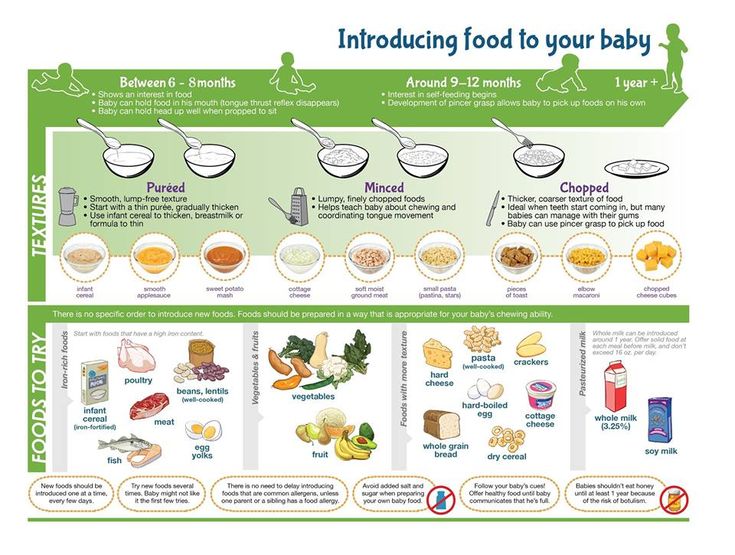
However, later it became clear that the ability of such babies to DIGEST complex meat protein is so small that it can hardly cover the daily requirement. Then it was due to the mother’s need to go to work from 4-6 months, maternity leave was so small, and, accordingly, the preservation of breastfeeding was called into question. And the child needed to be fed. So, back to protein, hydrochloric acid in young children is still produced in negligible amounts, bile to break down complex meat fat (and there are also fats in meat) is also produced negligible, but there is lactic acid. It is she who is needed to curdle milk protein, or mother's milk. nine0003
What else do we cover in the course “Complementary foods wisely”
In the course, of course, we consider this topic in more detail, but in general, I hope you understand why we start introducing complementary foods with lighter foods. The main sign that meat food at this stage is not suitable for the baby is a change in the nature of the stool, it does not just thicken, but becomes fetid.
Communicating with mothers for more than 5 years, I often hear: "And they told me that this is the norm." No, the stench, as you understand, cannot be attributed to the norm even in an adult. It tells us that the environment in the intestine is shifting to the alkaline side, this is the result of putrefactive dyspepsia (when undigested protein particles remain in the intestine for a long time, which feeds pathogenic bacteria). And the next step in this process is constipation. nine0003
We analyze in detail the dangers of constipation in early childhood in the 3rd module of the Gastrointestinal Health school.
The main stages of introducing products, taking into account the physiology of the gastrointestinal tract, are shown in the table. After the first stage of introducing products, when the “Diet Expansion” stage comes, there will no longer be a need to comply with this rule. As foods other than breast milk or BMS are introduced, both stomach and pancreas enzymatic activity will begin to increase, but this takes time.
Even an adult vegetarian, to start eating meat, needs about a month under the "cover" of enzymes, and here is a baby who did not give out this very meat. This is the basis of the main principle of complementary foods: GRADUAL. Now, while in the baby’s body everything is set up for digesting breast milk, even the activity of gastric lipase now matters, while in adults it does not play any role in the process of digesting fats. nine0003
When should an infant not be introduced to complementary foods?
- The child is unwell, teething
- Vaccination is due
- The child is in a stressful situation that you know about (a trip, a large number of people at home or going to visit, going to a clinic, etc.)
Better in these cases maintain the most familiar conditions for the child and minimize stress. Since we remember that the main food at the stage of introducing complementary foods is breast milk, it is more important to maintain interest in it. nine0003
Scheme and table of the first stage of introducing complementary foods to a child for 6 weeks - based on the recommendations of WHO and RAMS
- The most hypoallergenic vegetables are introduced first: zucchini - cauliflower - broccoli
- Gluten-free cereals: buckwheat, rice, corn
- Grams cost conditionally, in proportion to the days of introduction and the maximum serving size (the first day is always 0.
5 teaspoon)0003
Second week
Since porridge is traditionally served for breakfast, vegetables are gradually transferred to lunch. At the first stage of entering vegetables, see how it is more convenient for you. Or give two kinds of vegetables for breakfast. Or immediately share for breakfast - lunch. I would separate to better control GI response and allergies
Week 3
Same as week 2, broccoli instead of cauliflower for breakfast, zucchini or cauliflower for lunch (alternating if both were digested, if not, the product that mastered)
Fourth week
We introduce cereals in the sequence buckwheat - rice - corn grits for breakfast. For lunch, we eat any vegetables already entered in the amount of your maximum (zucchini, cabbage or their mixes). After assimilation of cereals, we add vegetable oil to them. By the end of this period, the child is offered complementary foods 2 times a day in its maximum volume (150 grams per 1 serving)
Fifth week
Taking into account the fact that in the recommendations of the Russian Academy of Medical Sciences, cereals are always offered in the morning, we cook 2 types of cereals in the morning.
Vegetables are left for lunch in the amount of your "full portion" (150 - 170 grams)
Sixth week
Further, by analogy, corn porridge is introduced for breakfast. And for breakfast, rice and buckwheat are left in turn. Also decreasing in volume as the corn porridge increases. Lunch no change - vegetables in the amount of your "full serving" (150 - 170 grams per serving)
Not sure? I also decided that everything is somehow complicated, and therefore I brought everything into one table. Below is a link to download it.
Complementary feeding table for the first 6 weeks
Here is an image with a table below, if you click on it, you can download a PDF file with a complementary feeding table for the first 6 weeks. It also contains grammar and more and more clearly Ska download PDF file - Scheme and table of introduction of complementary foods to a child for the first 6 weeks - based on WHO recommendations.
This table can be your sample plan for introducing complementary foods .It also has free cells in which you can put dates and get complementary feeding calendar .
After you have completed these 6 weeks, the first stage of complementary feeding can be considered complete. You can either replace the remaining vegetables at the first stage, for example, if something from the first three does not work, or introduce gradually at the second stage already with meat and fruits. This will be even better since they are more allergenic. nine0003
You can add a little breast milk (or formula) to the finished porridge and puree for taste, as I wrote earlier. ☝️ Do not cook! Don't forget to add vegetable oil. By the end of the first stage, the volume of vegetable oil will be about 3 grams. More detailed information on the steps for entering products and quantities in the table below. It will also come in handy for 2-4 stages.
Next comes the second stage of the introduction of complementary foods. I will talk about its features in a separate article, also based on the recommendations of WHO and RAMS.
nine0003
Scheme for the introduction of complementary foods from cereals
First, cereals without gluten and without milk are introduced. This is important in order to minimize the risk of developing an allergy to gluten and cow's milk protein. There is a detailed article about gluten and “what it is eaten with” on the website. Gluten-free is buckwheat, rice, corn (like cereals). At the first stage, these tastes are enough for the child.
To get a scheme for introducing complementary foods from cereals, you just need to swap all cereals with vegetables in the “scheme for introducing complementary foods from vegetables” (above in this material). That is, first we put buckwheat instead of zucchini, then rice instead of cauliflower - corn porridge instead of broccoli. Then come vegetables zucchini - cauliflower - broccoli. Grams remain unchanged. nine0003
Important points during the introduction of complementary foods
- Be sure to monitor the child's condition and his reactions to the introduction of new foods.
A food diary can help you with this. So you can understand what and when you gave, if you see an allergy or problems with the stool, or a change in the general condition. When most of the products have already been introduced, you can refuse it.
- When weaning begins, start offering water if the baby is breastfed without supplementation. At this stage, there is no mandatory rule. How much he drinks, how much he drinks. Water is better to offer raw purified or baby water, not boiled. As Dr. Komarovsky says: "boiled water does not exist in nature." nine0028
What to breastfeed or complementary foods first?
On page 229 of chapter 8 of the WHO recommendations, it is clearly written:
“Food should be offered after breastfeeding to avoid replacing breast milk with complementary foods”
At the same time, counselors say, on the contrary, “drink complementary foods with breast milk.” Again a mismatch.
It is logical that it would be more convenient for the baby to drink complementary foods that are not very tasty.
Pediatrician Yakov Yakovlev writes about the same thing and believes that not everyone wants some kind of complementary foods after milk, and this issue needs to be approached individually. After 6 months the risk of reduced lactation is not great. nine0003
Breastfeeding remains the main source of nutrition for a baby up to a year. Unless, of course, you decide for some reason to complete it earlier. Then you switch not to complementary foods, but to a mixture and give it according to the schedule and in volumes already according to age.
It will be possible to replace feeding after completion of all stages of introduction of products, namely after a year. The child goes to the common table, and breast milk remains a pleasant bonus as long as it brings mutual pleasure to mother and child. In general, the WHO recommends that breastfeeding be stopped until 2 years of age. Russian science is not so categorical. nine0003
The main and most important rule for introducing complementary foods!
- Complementary foods are not forced! If you see, the child categorically does not eat what is offered, spits, hysteria (not just pushes out with his tongue, but does not even try to taste it), no matter how the grandmothers, the pediatrician, the husband and even the neighbor who has a child at 6 months old insist.
already ate a baked apple, ☝️ leave this venture for at least a week - or even two. No violence, no shoving, worse than being held at the table. This is an indicator that the time has not yet come for your baby. nine1845
- Form the first food interest! Sit on your knees when you eat, show food, spoons, plates. Let everything touch. Just remove anything dangerous, sharp, hot or valuable and expensive from the access area. Babies learn so quickly that you won't even notice how the baby himself or herself takes a spoon. Even if you do not remember anything written above, this point is the most important. Understanding that everything has its time will save your nerves. And for a baby, a calm and affectionate mother is more important than a belly stuffed according to outdated rules. nine0028
Conclusion
If your child eats with appetite, learns new tastes well, is ready to eat more, you will pass the first stage in 6 to 8 weeks. Or it may happen that the child does not want to eat first one, then the other.
Then the preparatory stage of the introduction of complementary foods may be delayed and this is not critical.
The main thing is to keep calm and composure, look with the child for tastes that he will like in order to form the basis of dishes for the second stage, with which you will experiment further. The second stage begins with the introduction of meat and fruits (I indicated why above). And by the end of it, you will already get mixes: meat - vegetables, porridge - fruits. We will look at this in another article. nine0003
Love children! Feed confidently!
This material was created based on the recommendations of the WHO "Feeding and nutrition of infants and young children"
If you read the article in full and watched all the videos on this page - this is a real reason to be proud of yourself! Below is my set of tutorials!
My name is Alena Ponedelko. I am a pediatric nutritionist with a preventive approach, a consultant on complementary foods, nutrition for babies and mothers.




